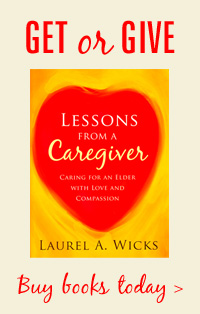May 12, 2011
Posted in Magazine Articles
The first time emergency preparedness appeared on my personal radar screen was shortly after the Loma Prieta earthquake in 1989. That temblor, which became known as the World Series Quake, occurred in San Francisco Bay on October 17, as the San Francisco Giants played the Oakland A’s in Candlestick Park.
Television networks with national feeds were there to cover the World Series and covered the earthquake instead. The blimp overhead broadcast pictures of a section of the fallen Bay Bridge in its odd diagonal resting place, along with shots of collapsed buildings and neighborhoods ablaze. While those aspects of the disaster were shocking, it took children to really grab my consciousness about the enormity of what had happened.
While in the area for a work-related project, I was tutoring students at a neighborhood elementary school in Point Richmond. The children were palpably frightened by the ubiquitous news coverage of the damage, and of the injury and death surrounding them. It showed in their eyes, and in their distracted behavior. They needed to talk about it. They asked questions and needed answers. We decided to explore together ways to allow them to feel more secure in facing future emergencies.
Our search found results—some simple, some surprising. We learned certain precautions were within their grasp and concrete enough to enhance the kids’ sense of security. It started with creating an affordable emergency supply kit for their families, a possibility even for those from low-income households.
In emergency preparedness, the rule of thumb is to be able to sustain yourself and your household for three days until help becomes available. The bare necessities include a gallon of water a day per person, food items that do not need refrigeration or cooking, plus a can opener, a flashlight, and a radio (both battery operated), along with spare batteries. The list of items can be much longer (see the full recommended contents from the Red Cross 72-hour emergency kit, in box). Even these few rudimentary supplies offered a level of comfort to schoolchildren following the earthquake. It helped, knowing they could protect themselves against thirst and hunger. They now had a safeguard against being in the dark without a communication link to the outside world. (more…)
Dec 10, 2010
Posted in Magazine Articles, The Pantry
The On Hand of the title does not refer to tattoos, manicures, jewelry or even the intricate henna designs applied to women’s hands for Hindu festivals. This On Hand is a reference to the manner a household is organized for both convenience and economy. When you are the one who provides the household with daily comfort and nourishment, it’s good to have ease and options.
What is in your pantry and cupboards, your root cellar, refrigerator and freezer that allows you more independence from daily trips to the grocery store? That’s what’s on hand. When you or your kids or your partner arrive home from a challenging day, do you have an array of choices for some nutritious snacks that fill the immediate need of rumbling stomachs and edgy tempers? On hand you might have a bowl full of dried apricots and whole almonds or sliced apples and pecan halves. It’s relief in an instant.
Planning ahead can allow your life to be more pleasurable and less driven, to use a pun. There are many times when it would be great to stay home, rather than get in your auto and fight the weather, time and traffic because there is nothing on hand for dinner. If you think long term, then you can free up your short term.
Some days the circumstances might be the complete opposite. Out in the world, if the day has been filled with long work hours and too many errands, adding a trip to the market might be just too much. Knowing that the ingredients for a delicious risotto are waiting at home could save you from that half hour detour. A glass of wine while you stir the risotto could put you back on top of the world.
It’s aroma therapy to fill your home with the smells of home cooked slow food. Many cooking projects work perfectly in tandem with a day at home while you are focused on other chores. Whether it’s desk work or house cleaning, it can be great to take breaks and do some cooking or baking. Moving back and forth between the computer and the kitchen gives parts of your brain time to expand and absorb, your legs and back have a chance to stretch. Pounding on bread dough is a fabulous stress reliever. By the end of the day, there will be a meal of tasty soup and warm bread fit for kings or your own family.
(more…)
Dec 27, 2007
Posted in Cooking, Magazine Articles
JH Magazine | Winter 2007
Being a pastry chef is about more than perfect endings. Pastries have their own sensibilities, their own timing. Mostly pastries are made in batches or a gigantic masterpiece commanding enormous amounts of time and attention. Pastry chefs are a part of every large restaurant or hotel kitchen, yet are a background support that quietly complements the work of producing plates for waiting diners. Sometimes they have a space of their own within the kitchen. Often they are the dedicated artists who work the odd hours when the kitchens are hushed. When a hotel guest arrives for breakfast, the pastries are fresh and warm. Not everyone gives thought to the person who arrived hours before the dawn to crank up the ovens.
Once you know it is in your blood to be a pastry chef, you must decide the path that is yours. It might be as a pastry chef in a fine hotel. You could wish to compete to be a World Chocolate Master and Culinary Olympic champion. Perhaps being a free agent who creates desserts for favorite local restaurants is the style you would choose. In Jackson Hole we enjoy them all.
(more…)
Oct 27, 2007
Posted in Magazine Articles, Preserving
Teton Home & Living | Autumn 2007
The torments of my childhood summers now deliver quiet pleasure to all of my seasons. As children, my brothers and I dreaded the inevitable annual regimens. They were announced by my parents, “Don’t make any plans for this weekend. We’re freezing corn.” Or beans or peas or asparagus. There was variety in the ultimata: making applesauce, tomato juice, tomato sauce, or canned tomatoes called “stewies”. Much of the picking of berries and vegetables was designated to the males. As many other chores were delegated as women’s work, I fumed as my brothers went off to play while I helped make jams and jellies or pickles or canned peaches or pears.
These were often boisterous activities with passels of aunts, uncles, cousins, one grandmother or another thrown into the mix. After all the work of picking, shucking, silking, blanching, cutting, bagging, boxing, labeling, transferring to the freezer, hauling cobs to the compost, cleaning the kettles and kitchen were finally accomplished, we’d have a feast of a picnic. (more…)



 Auntie Bru's Comfrey Comfort is a natural salve made with love in Jackson Hole, Wyoming. Available at
Auntie Bru's Comfrey Comfort is a natural salve made with love in Jackson Hole, Wyoming. Available at 